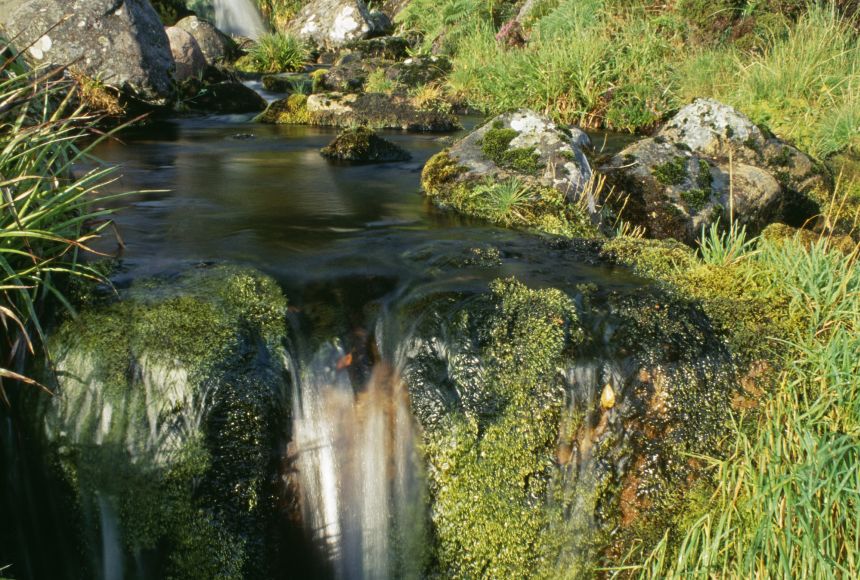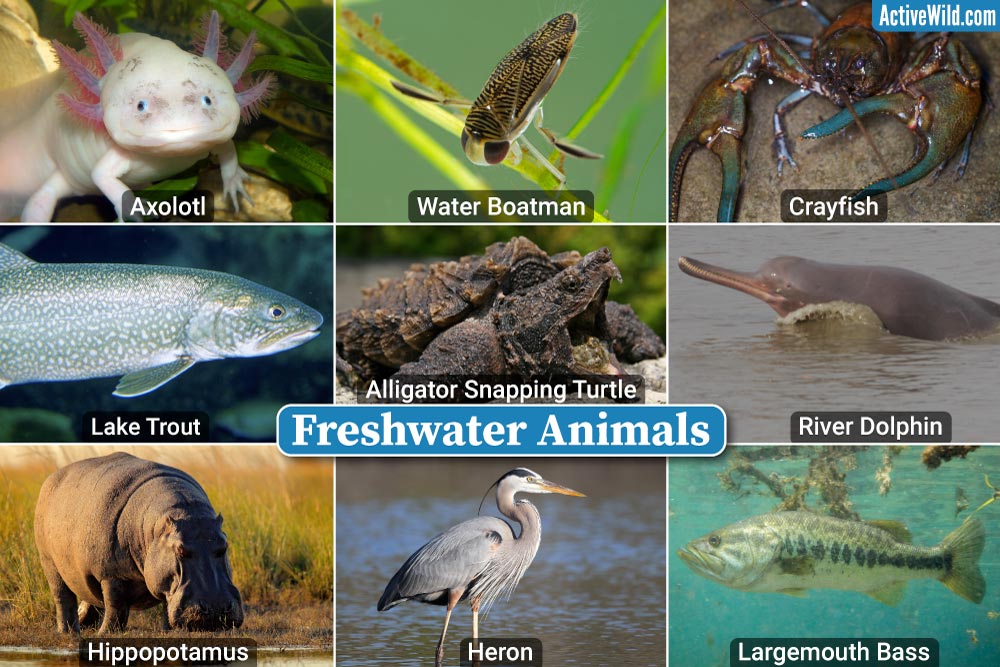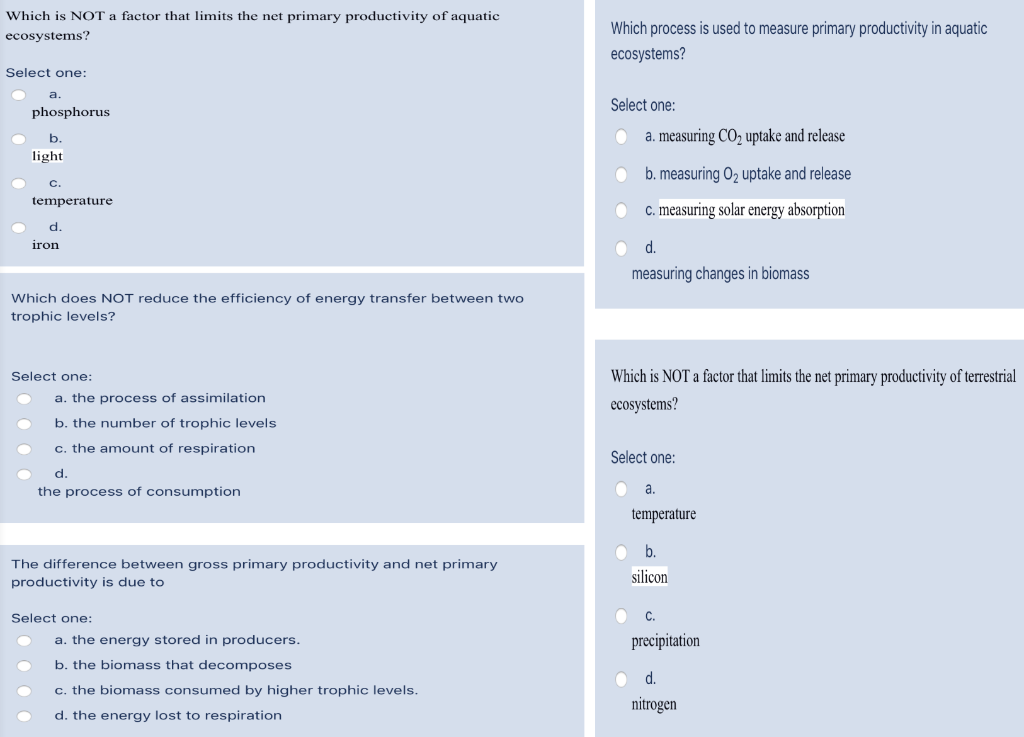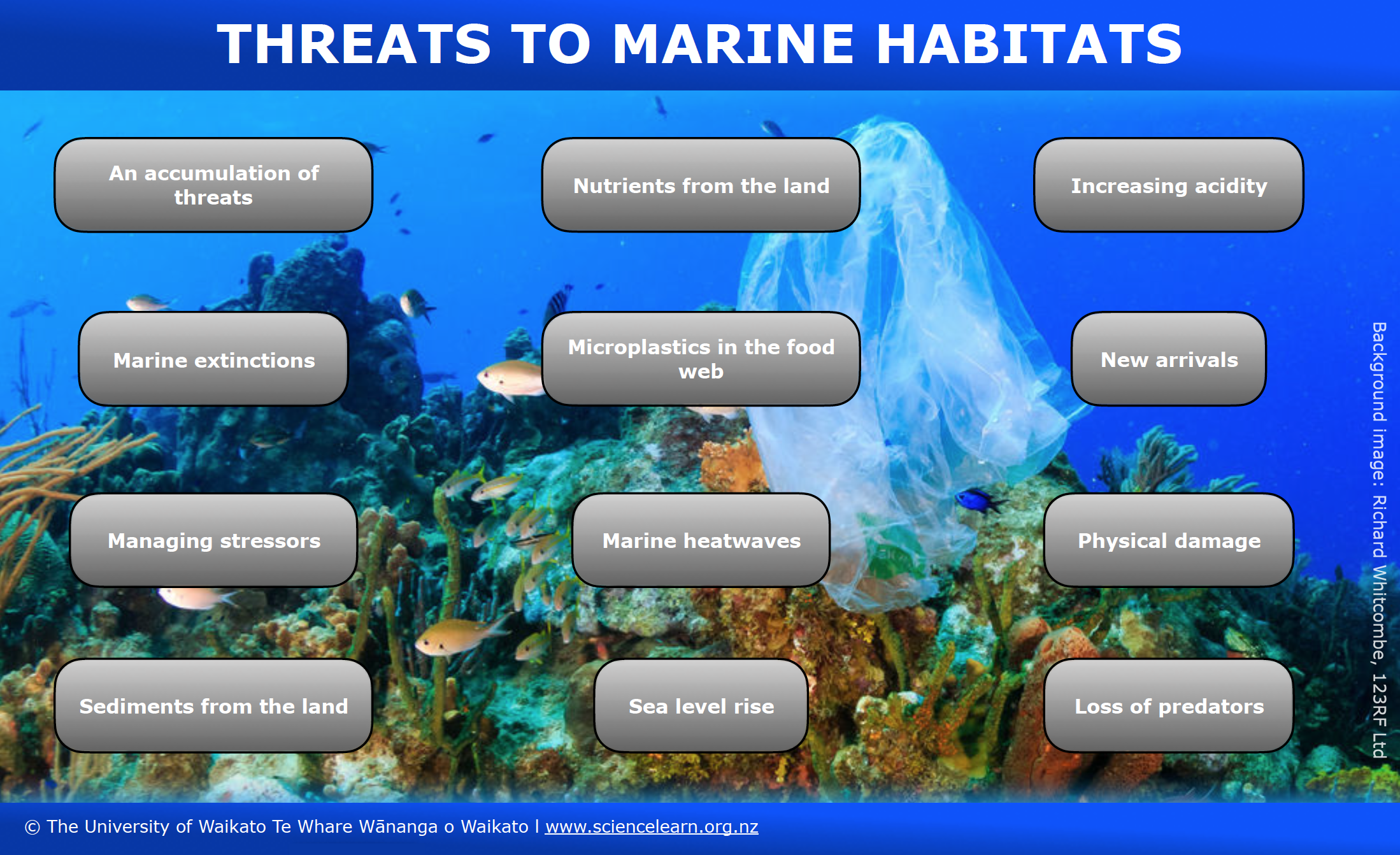Topic food web of aquatic ecosystem: Explore the intricate "Food Web of Aquatic Ecosystem," a fascinating journey through the interconnected lives beneath the waves, highlighting nature"s delicate balance and biodiversity.
Table of Content
- What are the primary consumers in the food web of an aquatic ecosystem?
- Understanding the Structure of Aquatic Food Webs
- Primary Producers: The Base of the Food Web
- Consumers: From Herbivores to Apex Predators
- YOUTUBE: Exploring Coastal Food Webs at the California Academy of Sciences
- Decomposers: The Unseen Heroes of Nutrient Cycling
- Impact of Human Activities on Aquatic Food Webs
What are the primary consumers in the food web of an aquatic ecosystem?
In the food web of an aquatic ecosystem, the primary consumers are organisms that eat the producers (phytoplankton and algae) which form the base of the food web. These primary consumers play a crucial role in transferring energy and nutrients from the producers to higher trophic levels.
- Zooplankton: Small organisms such as tiny crustaceans and protozoans that feed on phytoplankton.
- Small Fish: Fish species that primarily feed on zooplankton and other small invertebrates.
- Crustaceans: Various species of crustaceans such as shrimp, crabs, and lobsters that feed on phytoplankton and detritus.
These primary consumers are often preyed upon by secondary consumers, such as larger fish, predatory invertebrates, and marine mammals.
READ MORE:
Understanding the Structure of Aquatic Food Webs
Aquatic food webs illustrate the complex interactions between organisms in aquatic ecosystems. These webs showcase how energy and nutrients cycle through the environment, highlighting the importance of each organism"s role. Understanding these structures helps reveal the delicate balance sustaining aquatic life.
- Primary Producers: At the base, we have phytoplankton and algae, utilizing sunlight to produce energy through photosynthesis, serving as the foundation for the food web.
- Primary Consumers: These include herbivores like zooplankton, which feed on phytoplankton, and small fish that consume algae.
- Secondary Consumers: Small predatory fish that eat primary consumers, illustrating the next level of energy transfer.
- Tertiary Consumers: Apex predators, such as large fish, sharks, and marine mammals, feed on secondary consumers, topping the aquatic food chain.
Decomposers, including bacteria and fungi, break down dead material, returning nutrients to the ecosystem, thus completing the cycle. This cyclic flow ensures the stability and productivity of aquatic environments.
- Key Factors Influencing Food Webs: Nutrient availability, sunlight, temperature, and human impact like pollution and overfishing.
- Conservation Importance: Protecting each level of the food web is crucial for maintaining ecosystem health and biodiversity.
Through these interactions, aquatic food webs support a diverse array of life, underpinning the ecological and economic value of water bodies worldwide.

Primary Producers: The Base of the Food Web
Primary producers form the foundation of aquatic ecosystems, serving as the base of the food web. These organisms are crucial for the energy flow and nutrient cycling within water bodies, ranging from small ponds to vast oceans.
At the core of this group are phytoplankton, microscopic algae that float freely in the water column. Phytoplankton are autotrophs, meaning they produce their own food through the process of photosynthesis. By converting sunlight, carbon dioxide, and water into sugars and oxygen, they not only provide a vital food source for higher trophic levels but also contribute significantly to the oxygen content of the water.
Another key group of primary producers are algae, which include a variety of species from microscopic ones to larger forms like seaweeds. Algae inhabit different regions of aquatic environments, from the surface to the bottom, where sunlight can penetrate. They play a similar role to phytoplankton by undergoing photosynthesis and supporting higher levels of the food web.
In addition to these, rooted aquatic plants or macrophytes also play a crucial role in freshwater ecosystems. These plants are found in shallow waters where their roots can anchor into the sediment. They provide habitat and food for a multitude of aquatic organisms, besides producing oxygen through photosynthesis.
- Phytoplankton: Microscopic, free-floating algae that are the primary source of energy in most aquatic ecosystems.
- Algae: Includes both microscopic forms and larger seaweeds, essential for oxygen production and as a food source.
- Rooted Aquatic Plants (Macrophytes): Provide habitat, stabilize sediment, and serve as food for various aquatic species.
These primary producers are the first link in the food chain, supporting herbivores (zooplankton and small fish), which in turn are preyed upon by larger carnivores. The health and diversity of primary producers directly influence the stability and biodiversity of the entire aquatic ecosystem. Conservation of water quality and sunlight penetration is essential for the thriving of these vital organisms, underscoring the importance of protecting aquatic habitats from pollution and other human-induced impacts.
Consumers: From Herbivores to Apex Predators
Consumers in aquatic ecosystems play a critical role in the transfer of energy up the food web, from the primary producers to the top predators. These organisms can be classified based on their diet and position within the food web, ranging from herbivores that feed directly on primary producers to apex predators that have no natural predators of their own.
Herbivorous consumers, such as certain species of fish, zooplankton, and small crustaceans, feed on phytoplankton, algae, and aquatic plants. They are the primary link between the energy produced by primary producers and the rest of the ecosystem. Herbivores are crucial for controlling the populations of primary producers, ensuring that they do not overwhelm the ecosystem.
Omnivores, which consume both plant and animal matter, serve as a bridge between trophic levels, eating both primary producers and smaller consumers. These include many species of fish and some crustaceans that can switch their diet based on availability of food sources.
Carnivorous consumers are specialized in feeding on other animals. They range from smaller predators, like certain fish species that feed on herbivores, to larger predators such as pike, seals, and even sharks in marine environments. These predators are essential for maintaining healthy populations by preying on the weak and sick, thus preventing any single species from dominating the ecosystem.
Apex predators stand at the top of the food chain, with no natural predators of their own. In aquatic ecosystems, these include large fish, marine mammals like whales and dolphins, and large reptiles such as crocodiles. Apex predators are critical for maintaining the balance of the ecosystem by controlling the population of lower trophic levels.
- Herbivores: Consume primary producers, essential for energy transfer up the food chain.
- Omnivores: Eat both plant and animal matter, providing flexibility in the food web.
- Carnivores: Specialize in eating other animals, helping control populations and maintain balance.
- Apex Predators: Top of the food chain, regulate the ecosystem by preying on lower levels.
The intricate relationships between these consumers form a complex web of interactions that ensure energy flow and nutrient cycling throughout aquatic ecosystems. By understanding the roles and importance of each group of consumers, we can better appreciate the delicate balance that sustains aquatic life and the need for conservation efforts to protect these vital ecosystems.
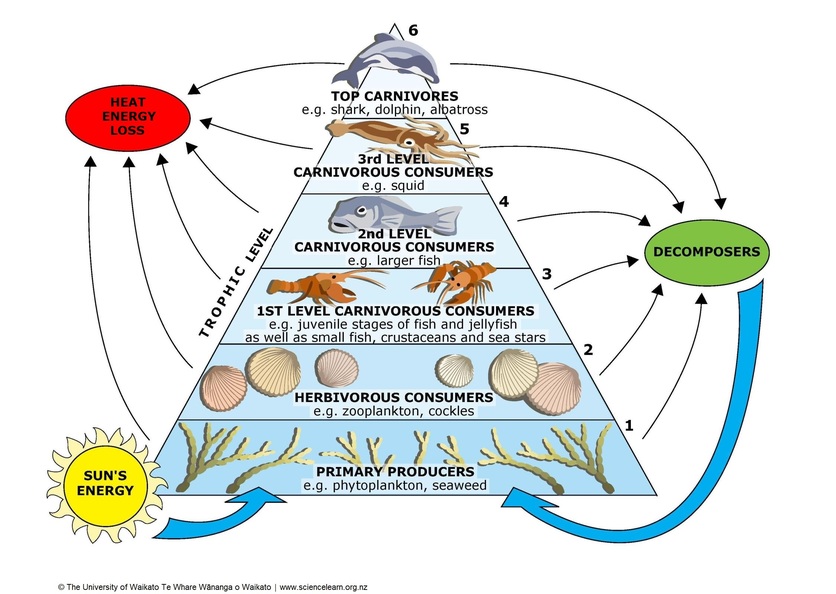
Exploring Coastal Food Webs at the California Academy of Sciences
Dive into the fascinating world of Coastal Food Webs and discover the intricate relationships between marine life! From hungry seagulls to elusive sea otters, this video will unveil the hidden wonders of the coast and leave you awestruck by the incredible web of life that sustains our oceans.
Decomposers: The Unseen Heroes of Nutrient Cycling
Decomposers play a pivotal role in aquatic ecosystems, breaking down dead organic matter and recycling nutrients back into the environment, making them available for primary producers. These organisms are the backbone of nutrient cycling, ensuring the sustainability of aquatic habitats by decomposing dead plants, animals, and waste materials.
Key decomposers in aquatic ecosystems include bacteria and fungi. Bacteria are microscopic organisms that work tirelessly to break down organic materials into simpler compounds. They are crucial in the decomposition process, transforming dead matter into nutrients that can be reused by algae and aquatic plants. Fungi, though less visible, play a similar role, breaking down the tougher materials that bacteria cannot handle, such as cellulose in plant walls.
Other important decomposers are detritivores, such as worms, certain insects, and small crustaceans. These organisms physically break down dead material into smaller pieces, which increases the surface area for bacteria and fungi to do their work. This process speeds up decomposition and nutrient cycling, making these organisms an essential part of the ecosystem.
- Bacteria: Microscopic decomposers that convert dead organic matter into nutrients.
- Fungi: Break down tough organic material, aiding in nutrient recycling.
- Detritivores: Organisms like worms and crustaceans that physically break down dead matter, facilitating faster decomposition.
Decomposers are often overlooked but are vital for the health and stability of aquatic ecosystems. They ensure that nutrients are continuously recycled, supporting the growth of primary producers and, by extension, the entire food web. The efficiency of decomposers directly influences water quality and the overall productivity of aquatic environments.
By understanding the critical role of decomposers in nutrient cycling, we can better appreciate the complexity of aquatic ecosystems and the importance of conserving these unseen heroes. Protecting their habitats from pollution and disturbance is essential for maintaining the balance of life in our waters.
Discovering Ocean Food Chains
Prepare to be amazed by the captivating journey of Ocean Food Chains! Embark on an underwater adventure where tiny plankton become the foundation for a complex chain of predator-prey relationships. Get ready to witness the breathtaking spectacle of marine life and gain a whole new appreciation for the delicate balance of nature.
READ MORE:
Impact of Human Activities on Aquatic Food Webs
Human activities have a profound impact on aquatic food webs, affecting every level from primary producers to apex predators. These changes can disrupt the delicate balance of these ecosystems, leading to long-term ecological consequences.
Pollution, including nutrient runoff from agriculture, sewage discharge, and industrial pollutants, significantly affects aquatic ecosystems. Excess nutrients can lead to eutrophication, a process that increases the growth of algae and phytoplankton, creating dense algal blooms that reduce oxygen levels in the water. This condition, known as hypoxia, can lead to dead zones where aquatic life cannot survive, disrupting the food web.
Overfishing and unsustainable fishing practices remove key species from the food web, altering the natural balance and leading to the decline of predator species, changes in prey populations, and a decrease in biodiversity. Such activities can collapse entire ecosystems, affecting the food security and livelihoods of communities that rely on these resources.
Habitat destruction, including the loss of wetlands, coral reefs, and mangroves, removes critical breeding and feeding grounds for many aquatic species. This not only impacts the species that live in these habitats but also affects the larger food web by reducing the availability of food and shelter.
Climate change is another significant threat, altering water temperatures and affecting the distribution and abundance of aquatic species. Changes in temperature can affect breeding patterns, migration routes, and the availability of food, leading to shifts in the food web dynamics.
- Pollution: Leads to eutrophication and hypoxia, disrupting primary production and oxygen availability.
- Overfishing: Alters species balance, reducing biodiversity and ecosystem stability.
- Habitat Destruction: Removes essential breeding and feeding grounds, impacting species survival.
- Climate Change: Affects species distribution and abundance, altering food web dynamics.
The cumulative impact of these human activities can lead to reduced ecosystem resilience, making it harder for aquatic ecosystems to recover from disturbances. Protecting these ecosystems requires global efforts to reduce pollution, manage fisheries sustainably, preserve habitats, and mitigate climate change. By understanding the impact of our actions, we can take steps to preserve the delicate balance of aquatic food webs for future generations.

